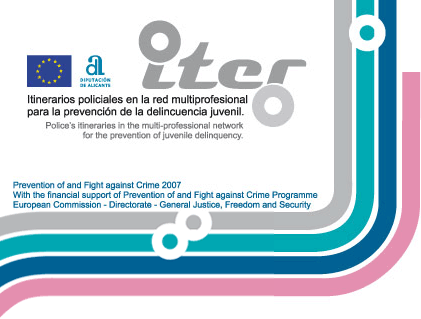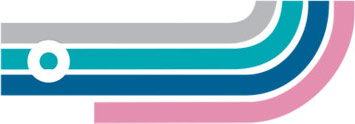home | participants | ITER Project | links | contact
seminars | articles | documents | limited access
Space of Reflection | What is your opinion?
>> keys issues
Children and young people use of alcohol and drugs in Denmark
Our danish partners, Videscenter for Integration provide this interesting research paper
Children and young people use of alcohol and drugs in DenmarkAlcohol
According to the National Board of Health in Denmark, alcohol consumption among Danes is very large. The recommended maximum intake of alcohol per week for women is 14 units, and for men, 21 units. Furthermore, it is not recommended to drink more than 5 units at the same occasion. These recommendations are not followed by many Danes. In 2007 for example, some 860,000 people drank more than the recommended maximum amount of alcohol per week. This alcohol culture is also practiced the youth. The government recommends 0 alcohol intake for youth aged 16 and below; and for 16-18 years old, as little as possible. It seems, however, that these recommendations are being ignored by the majority of the youth – the record of young Danes’ alcohol intake is one of the worst in Europe.The large alcohol consumption among adults and youth/children causes issues at the family level, and in society. Alcoholism causes issues within the family as well as alcohol-related illnesses (60 different kinds) etc.
Alcohol consumption among the youth
Statistics from 2006 show that 20% of 11 year-old boys and 8% of 11year-old girls have had minimum 1 unit of alcohol. Approx. 85% of 15 year-old boys have had minimum 1 unit alcohol and 82% of the girls have had minimum 1 unit of alcohol.
As mentioned above, the youth drinks more and more frequently than their counterparts in other European countries. Fortunately, this tendency is changing and the age of debut is getting higher and the amount of consumption is getting lower than the past years. Studies show that the later the age of debut in alcohol intake, the smaller the risk of becoming an alcoholic, i.e., the later children/youth starts drinking that better prepared they are to handle and control their alcohol consumption.
Studeis done over the past few years indicate that the low debut age is getting higher: in 1999, 70% of the boys drank their first unit at an age of 13; in 2002 the number decreased to 56%. For the girls, the number in 1999 was 56% and in 2002, 44%.
Consequences for children and youth
It is very damaging for children and youth to drink alcohol, as their brains have not fully developed and are very sensitive towards the damages caused by alcohol.
Among the consequences of consuming alcohol at a very young age are: Traffic accidents, unwanted sex or getting involved in crime such as vandalism or violence because the child was under influence of alcohol and not “thinking” at the time. A national study conducted among boys and girls in 9th grade on the problems they had as a result of drinking alcohol gave the following results:
- Fight (girls 10% and boys 20%)
- Involvement in an accident (girls 5% and boys 9%)
- Problems with friends (girls 36% and boys 22%)
- Low performance in school (girls 15% and boys18%)
- Unwanted sexual intercourse (girls 8% and boys 8%)
- Unprotected sex (girls 10% and boys 11%)
- Problems with the police (girls 4% and boys 11%)
The young people who drink most are not doing fine –mentally and physically - in school, and they are in far more at risk of trying and getting addicted to marihuana and other kinds of prohibited drugs.
Drugs
From 1995 to 1999, data show a steady increase in the consumption of drugs among 15-16 year-olds. From 1999 to 2007 this number has been stable with some minor increase in the use of marihuana, ecstasy and cocaine. Almost 25% of the 15-16 year olds have tried marihuana once, and approximately 10% have tried it within the last month they were interviewed.Approx. 5% of the youth have tried ecstasy and amphetamine, and 3% have tried cocaine. There are gender differences in experimenting with drugs among the 15-16 year olds. In general, more boys than girls have tried different drugs. Only ecstasy was tried by approximately as many girls and boys. The report, ”Narkotikasituationen 2008” (The drug situation 2008), published by the National Board of Health, shows that experimenting with sniffing different gases and solvents especially occurs among 12-15 year olds. Latest studies show that 6% of the 15-16 year olds have tried sniffing, but only 1% of the 15-16 year olds that have tried sniffing more than 10 times. Sniffing is especially dangerous because it has a potential risk of severe accidents and damages the health. These sniffing products are available in different kinds of products that are used in everyday life and therefore are very accessible. Sniffing often occurs in small groups of young people when it is “in” to sniff. At the national level, the cases of youth hospitalised due to cocaine poisoning more than trebled – from 45 cases in 1999 to 134 youth in 2007. Customs police has also confiscated more of the white powder than before. The customs’ narco-dogs had sniffed 20,7 kg of cocaine in October 2007, as compared to 11,3 kg of cocaine in the same period in 2007 (Tax Bureau/BT Magazine). A survey conducted among 1.631 respondents aged 13 to 17 who were admitted at the Emergency Room at Kolding Hospital in Region South Denmark showed that 33% of them had taken drugs, cocaine or alcohol in the last 24 hours. Their response showed that many teenagers that have been admitted at the Emergency Room had experimented with drugs, or that they are drunk. Respondents aged 15 and above had the most experience in taking drugs. It can be concluded that young people who party a lot and drink alcohol use the most amount of illegal drugs.
The role of the parents
The youth counselling (in Vanløse, Denmark) have had some experiences of parents who often are reluctant when it concerns their children’s alcohol consumption. There may be several reasons for this, among others: · Parents today focus the upbringing of their children more on teaching them independence than obedience. · Parents in general are unsure of themselves than earlier.
· Parents do not want to go into conflict with their children.Actually, many children and young people want their parents to express their attitude towards these subjects more clearly. They describe their parents as being absent, weak, and in worst cases, indifferent. When pupils in 7th grade are asked how parents should act towards children and young people and their alcohol consumption, they answer:
- parents should forbid their children to drink alcohol (20%)
- parents should decide how much alcohol can be consumed, and when (23%)
- parents should teach their children to handle alcohol in a sensible way (51%)
- parents should not interfere in their children’s consumption of alcohol (5%).
Approx. 11% of the respondents from 9th grade said that parents should not interfere in the children consuming of alcohol. From this, it can be surmised that children and young people expect their parents to interfere in their consumption of alcohol. This is not to say that children will not try break the rules, but they expressed a need of these kinds of boundaries.
There is a reason for concern when:
- There are great conflicts at home
- If the child is not happy to go to school, or does not go to school or work.
- If the child has low self-esteem and no future dreams.
- If the child abuses the use of alcohol, marihuana or other kinds of drugs.
- If the child have friends who have the same kinds of problems.
Crime among the youth
In Denmark, the minimum age that a child may be charged with a criminal offence is 15 years old. Therefore, not much statistic can be found about children below 15 years old who had committed a criminal offence. As many of the young offenders had not been presented to a judge, the statistics is very poor and unsure. The main crime among young people is shoplifting (about 33%) and vandalism (13%) (cases where children are apprehended for different crimes from 1992-2005).
Child & Youth Welfare & Initiatives of Vejle Municipality to Fight Drug Use Among Young People
Vejle Kommune’s Child and Youth Welfare Division, has a Department called ”SSP – Samarbejde bland social myndihegderne og politi” (Cooperation between the police and social services unit). Under the law, the SSP is mandated to see to the welfare of, and protect children and youth. SSP works with teachers in primary and secondary schools, the police, parents, and has a 24-hour hotline service for children and youth. The unit concerned primarily in prevention to ensure that young people are not abused, go to school/avoid truancy, prevent criminality among the youth, etc. but likewise works with other institutions on rehabilitation of the target group. Vejle Kommune is also implementing “Narco ud af byen” (Drugs out of the city), in cooperation with the police, schools, restaurants, bars, and leisure and football clubs, wherein spot checks are made in areas where the youth go to relax and party, to ensure that drugs are not being used in these areas. It organizes conferences, information dissemination on drug abuse and , in partnership with the police force, implement quarantine among the offenders. Another unit, the Resource Centre for Integration, is concerned about good integration of young migrants, and is very competent in research and the use of IT and mobile platforms in education.
http://www.sitecenter.dk/ungeraadgivningen-vanloese/ungeogalkohol/
http://www.sst.dk/Sundhed%20og%20forebyggelse/Narkotika/Snifning.aspx
http://www.sst.dk/~/media/Sundhed%20og%20forebyggelse/Narkotika/Narkotikasituationen_2008.ashxhttp://www.vejle.dk/page25238.aspx
Beck, Steen og Stine Reesen (red.) ”Rundt om rusen – en anologi om unge og rusmidler” 2007, Syddansk Universitet.

>> keys issues
ITER Project Research
The results of the quantitative investigation "Research about families with troubled children" are already avalaible.
Play with Teen City, Dare you do it?
Fruit of the ITER Project, Teen City is a videogame for adolescents which is based in a social simulation, facing specific situations and taking some decisions. Dare you do it?
ITER PRACTICAL GUIDE
It provides a support material for policemen who give speeches to young people in schools.
ITER courses
The ITER has offered throughout the project a formation to policemen, chiefs and police mid-level executives.
The ITER Project culminated with an INFO DAY in Brussels on 13th july
This event was organized by the Fundacion Comunidad Valenciana Región Europea -FCVRE- in order to facilitate the dissemination of the ITER Project results through Europe.
Children and young people use of alcohol and drugs in Denmark
Our danish partners, Videscenter for Integration provide this interesting research paper
Family -School-Work Bullying: What it is on?

Summary of the Johan Galtung conference given in the I Seminar of ITER Project
